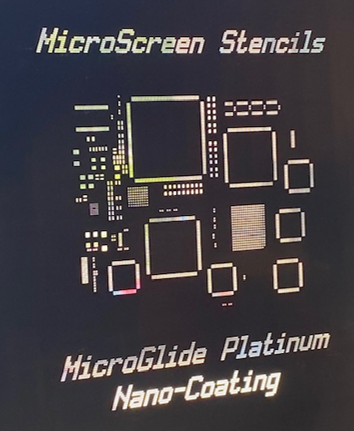Overview of Nanocoatings
Nanocoatings are used in a wide variety of industries. They can allow electronic devices to repel liquid, improve the efficiency of solar panels, and even be used as an alternative to certain adhesives. Nanocoatings are especially useful when working with solder paste during printed circuit board (PCB) assembly. They improve transfer efficiency, reduce deposits and defects, and enhance the cleaning process, enabling you to increase productivity and reduce overall costs. Nanocoatings make noticeable improvements in transfer efficiency for a wide range of solder pastes, including tin-lead, water-soluble, no-clean, and lead-free options.
MicroGlide Nanocoating
MicroGlide nanocoating improves print quality and repels flux without clogging apertures or altering their size. This two-part, single-use wipe provides an even nanocoating to the entire surface and aperture walls. This allows a more uniform deposit of solder paste so you can print more boards between stencil cleanings while eliminating common defects like solder balling and insufficient material. It can even allow you to exceed suggested area ratio limits. Lasting up to 25,000 print cycles, MicroGlide can be reapplied to any stencil at any time.
MicroGlide Platinum Nanocoating
MicroGlide Platinum is the most durable and advanced nanocoating currently available. It provides a thinner, more durable, and longer-lasting layer than the standard MicroGlide nanocoat. Applied to stencils at very high temperatures, it cures in just 15 minutes to create a surface that resists flaking, cracking, and chipping. It can even bond well to stainless steel. MicroGlide Platinum can last up to 75,000 print cycles, saving time and money.
MicroScreen Nanocoatings
MicroGlide and MicroGlide Platinum are both excellent nanocoatings to enhance the production of printed circuit boards. In addition to nanocoating, consider the following factors that also play important roles in the process:
- PCB stencil design
- Printer parameters
- Environmental conditions
- PCB design
- PCB soldermask registration
To learn more about nanocoatings and how to improve your PCB assembly process, subscribe to the MicroScreen blog!
